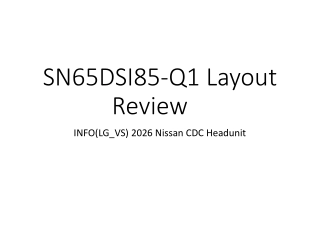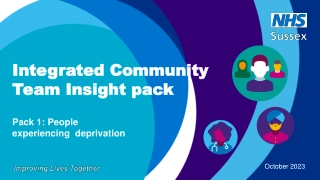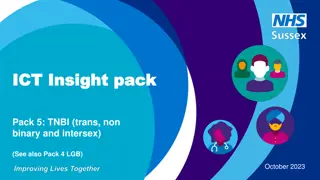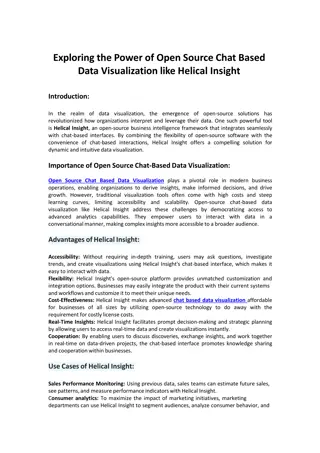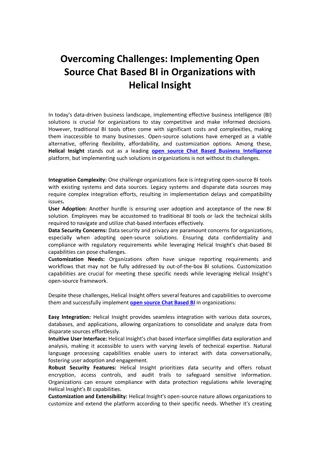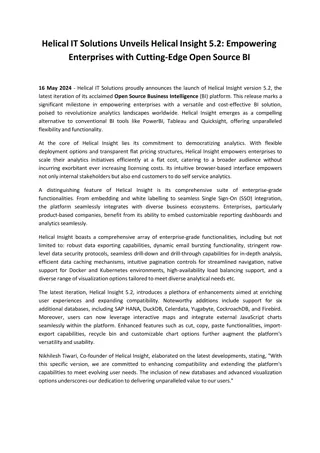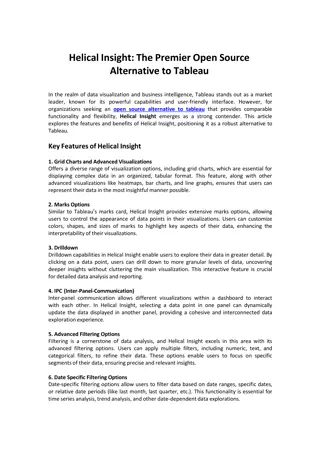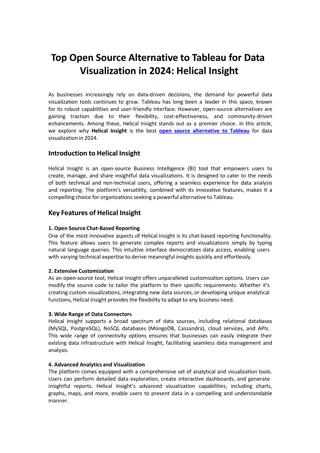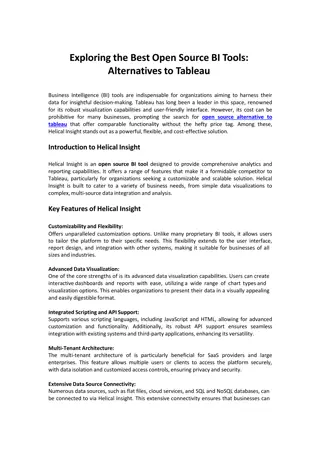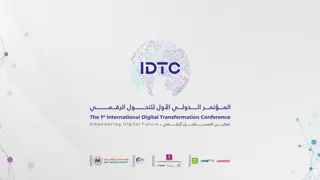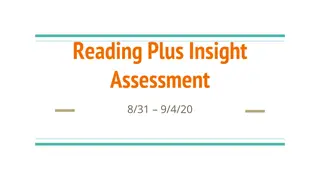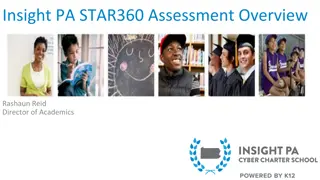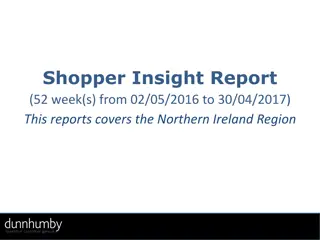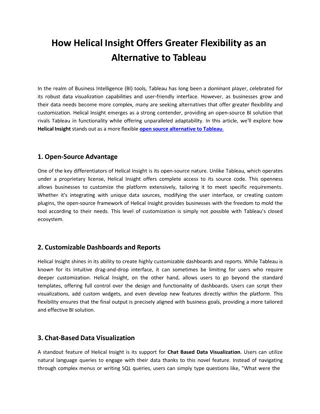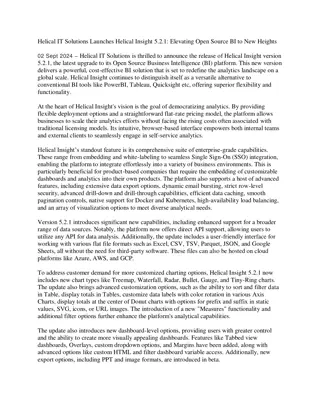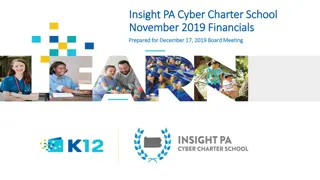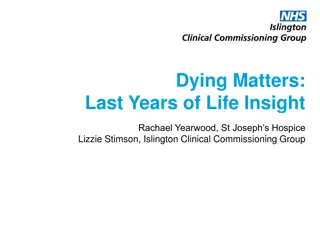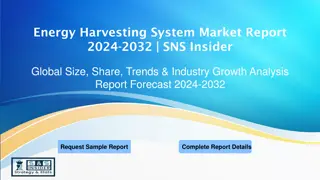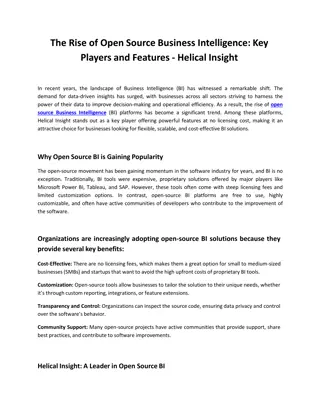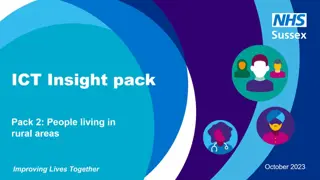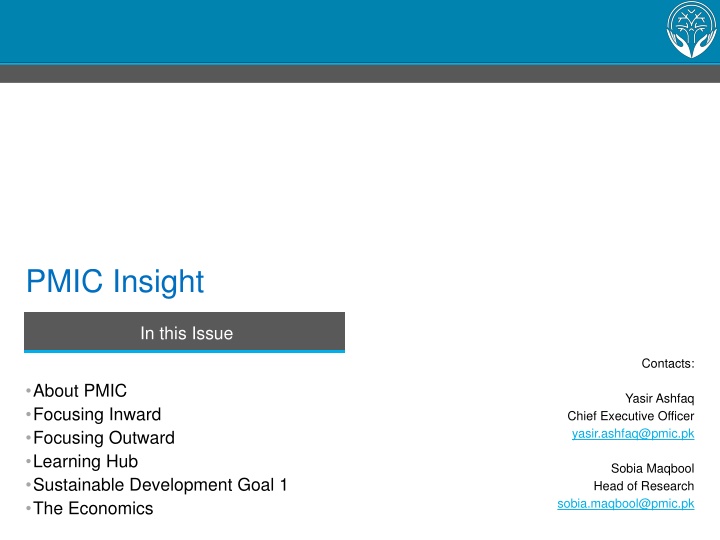
Enhancing Financial Inclusion in Pakistan through PMIC's Innovative Solutions
Learn how Pakistan Microfinance Investment Company Limited (PMIC) is revolutionizing access to finance through a range of innovative fund and non-fund based solutions, aiming to bridge the gap in funding and promote financial inclusion in the country.
Download Presentation

Please find below an Image/Link to download the presentation.
The content on the website is provided AS IS for your information and personal use only. It may not be sold, licensed, or shared on other websites without obtaining consent from the author. If you encounter any issues during the download, it is possible that the publisher has removed the file from their server.
You are allowed to download the files provided on this website for personal or commercial use, subject to the condition that they are used lawfully. All files are the property of their respective owners.
The content on the website is provided AS IS for your information and personal use only. It may not be sold, licensed, or shared on other websites without obtaining consent from the author.
E N D
Presentation Transcript
PMIC Insight In this Issue Contacts: About PMIC Focusing Inward Focusing Outward Learning Hub Sustainable Development Goal 1 The Economics Yasir Ashfaq Chief Executive Officer yasir.ashfaq@pmic.pk Sobia Maqbool Head of Research sobia.maqbool@pmic.pk
Pakistan Microfinance Investment Company Limited Integrated Intervention Strategy Innovating to Grow Product Verticals Fuelling the Sector s Growth Instead of being a market actor that steps in to just fill in the funding gap, PMIC facilitates any initiative that enhances financial inclusion in the country! Funding needs of the sector participants have evolved in line with growth and PIMC is geared to respond to those needs with innovative fund and non-fund basedsolutions. Moreover, PMIC is distinctly positioned to crowd-in resources from both on-shore and off-shore lenders/investors for the sector s benefit! As an apex institution, PMIC understands that creating socio-economic impact requires meaningful contribution towards development of need based financial products and services, in addition to provision of loans. Our Product Verticals include: Microfinance Plus Initiatives Short, medium & long term facilities Syndicated Financings Sub-ordinated Loans Tier-II Investments Equity Investments SPV Based Credit Enhancement Advisory Financial Currency & interest rate hedging Underwriting Investment vehicle / platform for on-shore and off-shore investors & lenders Enterprise Developm ent Micro- Insurance Digital Finance Renewable Energy Building Eco- System Agri & Enterprise Value Chains Graduation out of Poverty Fund Based Non-Fund Based Conduit Financing & Investment Solutions for MFPs Education Financial Profile Dec 17* Vision Shareholders Profile Pakistan Poverty Alleviation Fund Set up by the Government of Pakistan as an autonomous not-for-profit organization Enjoys facilitation and support from the Government of Pakistan, The World Bank, International Fund for Agricultural Development (IFAD), KfW (Development Bank of Germany) and other statutory and corporate donors Karandaaz Pakistan Set up by the United Kingdom Department for International Development (UKAid) and the Bill & Melinda Gates Foundation Promotes access to finance for small businesses through a commercially directed investment platform, and financial inclusion for individuals by employing technology enabled digital solutions KfW Development Bank German government owned development bank Finances & supports programs & projects that mainly help countries fight poverty, maintain peace, protect both the environment and the climate A Pakistani society where the underserved are empowered Paid-up Capital: USD 53m Sub-ordinated Debt from Sponsors: USD 60m Loan Portfolio: USD 104m Outreach: 413,134 beneficiaries Portfolio allocation to women: 86% *Exchange Rate: 1 USD = Rs. 110.7 Mission Credit Ratings Provide financial and institutional services to strengthen and scale-up provision of sustainable and responsible access to finance to individuals, micro entrepreneurs and micro enterprises in Pakistan to enhance employment and income opportunity for economically poor and underserved citizens and improve the lives of the poor Long Term: AA Short Term: A-1+ Outlook: Stable By: PACRA
Focusing inward Access to finance is identified as a major factor contributing to economic growth by numerous studies. In Pakistan, the Small and Medium Enterprises are considered too big to avail microfinance and too risky or small for commercial finance; this has resulted in a huge Missing Middle. In order to facilitate greater access to credit along the spectrum of varying sizes of enterprises, the State Bank of Pakistan (SBP) has recently enhanced the loan size limit to Rs. 1m for microenterprises. At end- Sept 17, the average outstanding loan size for MFBs was reported at Rs. 50,000; far below the maximum loan limit of Rs. 500,000 at the time. Microenterprise loans represented just 10% of total micro-credit, including lending by NBMFIs. As MFBs try to move up market, they may need to be cognizant of the distinct characteristics of micro- enterprises requiring a loan of Rs. 50,000 versus Rs. 1m. If the sector is to avoid undue risk, product design and client assessment must be driven by evidence emerging out of market research! Are MFBs ready to Are MFBs ready to capture the capture the opportunity of opportunity of increased loan limit increased loan limit of Rs. 1m? of Rs. 1m? With almost 45% of the labor force employed by the sector and GDP contribution of 25%, the importance of the agriculture sector cannot be over-stated. Over the years, droughts and other environmental factors have affected the productivity of the sector, among other factors, such as lack of access to credit. Microfinancing is bridging this credit gap. Almost 2.4m of the micro-finance borrowers have taken out agriculture and livestock loans; however only under 3% of these have crop or livestock insurance. This represents both a risk and an opportunity. While microfinance institutions have been able to recover out of flood losses in the past, exposures are bigger now on a per party basis and in aggregate and hence the risk is more acute now than before. For the insurance sector, this represents an untapped market, looking to be developed! PMIC s experience evidences that product development will have to be accompanied with awareness raising. Is the sector Is the sector exposed to exposed to agriculture and agriculture and livestock losses? livestock losses?
Focusing outward By 2017, global adoption of smartphones had grown to almost 4 billion connections, nearly double the number only three years earlier. While there is still significant disparity in adoption trends by region, with Eastern Africa and South Asia having much lower adoption levels of 25% and 30%, respectively, as of mid- 2017, compared to the global average of 50%; it can and is already beginning to shape the way microfinance is being approached in some of these markets. In the absence of credit information on the currently un-banked, non-traditional data sources such as telco data is increasingly being used to predict behavior patterns. Traditional micro-lending approach can be complemented with data analytics to manage risk better and advance the provision of micro-finance services. Practitioners may however have to be cautious about the potential risk of eliminating human interaction in the field in entirety. Mobile phone penetration is also influencing outreach and delivery mechanisms. Given that the brick and mortar approach entails huge infrastructure costs, smartphones represent an alternative delivery channel that can enable microfinance operators to reach out to more customers faster and cheaper. Is Mobile the Future Is Mobile the Future of Microfinance? of Microfinance? Recent developments indicate that the big platform players could accelerate a process of financial inclusion that began over 40 years ago with microfinance institutions. Ant Financial (the financial services arm of the Alibaba group) entered the Indian market in 2015 through an initial investment in PayTM and is expanding aggressively into other markets in Asia. Google launched its Tez payment functionality in India, integrated with other Google services. Facebook launched Facebook Messenger Pay in the Philippines, with plans to expand into other markets with low banking sector penetration and high Messenger usage. But financial services are not necessarily the end goal for these large players, which are mainly geared towards deepening user engagement with their core internet and social networking services, thereby harvesting the data and advertising revenues generated by that interaction. Adding millions more people through networked digital services could provide a huge boost for financial inclusion, but many thorny questions remain around ensuring that digital financial services actually reach the poor rather than perpetuate a digital divide! Financial Inclusion Financial Inclusion in 2018 in 2018 Financial Inclusion in 2018: BigTech Hits Its Stride Greta Bull
Learning Hub Case Study Question of the Quarter World Bank Development Indicators - Pakistan Account (% age 15+) 2014 actual data versus 2020 targets Account at a Financial Institution (% age, 15+) What is Financial Inclusion? Using Sex-Disaggregated Data to Promote Women s Financial Inclusion in India* 60 16 50 14 Definition 40 12 Challenges 10 30 8 Financial inclusion means that individuals and businesses have access to useful and affordable financial products and services that meet their needs transactions, payments, savings, credit and insurance delivered in a responsible and sustainable way 20 6 4 Challenges in accessing financial resources embedded in patriarchal bias of the Indian society Institutions mediate gender bias that relegates women to a subordinate position with limited access to productive resources 10 2 0 0 Aggregate Female Aggregate Male Female Mobile account (% age 15+) Employment to population ratio, 15+ Stages of Theory of Change 10 90 9 80 8 70 7 60 Context Intervention Strategy Outcome Is it relevant? 6 50 5 Poor access of women to formal financial services due to absence of sex- disaggregat ed information on credit delivery in banks Sex- disaggregat ion of access to financial services by women and target setting by Reserve Bank of India (RBI) for banks to advance credit to women Separate reporting on women s share of credit in bank lending with details on employmen t, organizatio n, etc. Meet RBI s target of 2% (increased to 5%) of net bank credit to women Extend outreach to women through innovative financial services and products Increased women s access to finance from 2.36% in 2001 to 5% in 2005 and 7.57% by 2013; Increased financial inclusion for women leading to gender equality/wo men s empowerm ent 40 4 30 3 Financial inclusion is becoming a priority for policymakers, regulators and development agencies globally Financial inclusion has been identified as an enabler for at least 8 of the 17 Sustainable Development Goals The G20 committed to advance financial inclusion worldwide and reaffirmed its commitment to implement the G20 High-Level Principles for Digital Financial Inclusion The World Bank Group considers financial inclusion a key enabler to reduce extreme poverty and boost shared prosperity, and has put forward an ambitious global goal to reach Universal Financial Access (UFA) by 2020 20 2 10 1 0 0 Aggregate Male Female Aggregate Male Female Link to Economic Development As per an IMF/NBER Working Paper, for each of the six countries included in the study, there is a significant and unambiguous impact on GDP growth and productivity, as a result of eliminating blockages to financial inclusion along three dimensions access to credit, depth of credit and intermediation of credit** Gender discrimination estimated by a McKinsey study means that the world s economy is functioning at only 75% of its potential In a scenario in which women play equal roles in labor markets as that of men, as much as $28 trillion, or 26%, could be added to global annual GDP by 2025 Adults without an Account, by region (%), 2014 Asia & Africa are home to most of the world s unbanked Regionally, gender gap in account ownership is largest in South Asia 17% 31% 10% Future Works Cited 5% 6% 4% 24% 3% * Case Study: Using Sex-Disaggregated Data to Promote Women s Financial Inclusion in India - Printed and published by the Commonwealth Secretariat ** Quantifying Macroeconomic Impacts of Financial Inclusion - Yuwa Hedrick Wong; countries included - Uganda, Kenya, Mozambique, Malaysia, Philippines, and Egypt RBI targets set the stage for the introduction of a number of gender sensitive reforms and actions to sustain the momentum of increasing women s financial inclusion Banks will have to ensure the impacts of the sex-disaggregated initiative filters down to the grassroots level Sub-Saharan Africa Europe & Central Asia Middle East East Asia & Pacific Latin America & Caribbean Other Economies High-Income OECD Economies South Asia
SDG 1: End Poverty in all its forms everywhere Regional Comparison of Indicators Sustainable Development Goal 1 Social Safety Programs in Pakistan Poverty ScoreCard developed with the support of World Bank, a tool to measure poverty on a scale of 0-100 using an expenditure survey Benazir Income Support Program (BISP) Pakistan s flagship national safety net system Nationwide Poverty ScoreCard survey, conducted in 2010, enabled the BISP to identify eligible households 7.7m households living below cut-off score of 16.17 More than US$ 3.5b disbursed to BISP beneficiaries out of whom 93% receive the cash transfers through technology based payment mechanisms (Debit Cards, Mobile Phones, Smart Cards) World Bank Brief, 2016 40% of the beneficiaries in a selected sample of 263 graduated out of basic poverty bands and moved to higher categories - study by the Sustainable Development Policy Institute (SDPI) Prime Minister Interest Free Loan (PMIFL) an interest free loan of up to Rs. 50,000 for productive purposes targeted towards individual with a score of up to 40 on the Poverty Score Card; 500,000 beneficiaries As individuals are able to develop more sustainable livelihoods, they can access the micro-credit market and come into the fold of formal financial services Regional Comparison of Indicators of Poverty Bangladesh China GOAL: By 2030, reduce at least by half the proportion of men, women and children of all ages living in poverty in all its dimensions according to national definitions1 Women are disproportionately more likely to live in poverty than men due to unequal access to paid work, education and property South Asia and sub-Saharan Africa, account for 80% of the global total of those living in extreme poverty In Pakistan, 54.6% people live in deprivation as measured by the Multidimensional Poverty Indices (MPI) Punjab has the lowest multidimensional poverty while Baluchistan has the highest incidence Social protection systems are fundamental to preventing and reducing poverty and inequality at every stage of people s lives; preliminary data show that in 2016, only 45% of the world s population was effectively protected by a social protection system Building the resilience of the poor and strengthening disaster risk reduction is a core development strategy for ending extreme poverty in the most afflicted countries. Economic losses from disasters are now reaching an average of $250b to $300b a year India Nepal Pakistan Sri Lanka 0 10 20 30 40 50 60 70 80 % Population below $1.90 Purchasing Power Parity (PPP) a day (2014) % Employed Population below $1.90 Purchasing Power Parity (PPP) a day (2012) % Population Living below the National Poverty Line (2015) The figure is based on Basic Statistics 2017 Asia Development Bank Roadmap to Ending Poverty
The Economics The Economy Banking Sector Commercial Banking Sector Microfinance Sector Microfinance Sector Post 2008 set back experienced by the banking sector, the industry players have mostly recovered and financial indicators depict resilience. The impact of past credit losses has been absorbed with net impairment reported at 1.1%. Credit outlay has begun to pickup in recent periods, though the sector continues to feature a high level of liquidity with liquid assets in relation to deposits reported at almost 76% for commercial banks at end- Sept 17 as reported by the SBP. At the end of Oct 17, banking sector advances were reported at Rs. 6.2tr, up from Rs. 5.6tr at the end of 2016. In relation to GDP, private sector credit is however considerably lower vis- -vis regional peers. Markup spreads are at their lowest levels in the last seven years at under 5%. There is a strong regulatory push to increase lending to SMEs, which currently stands at about 10% of total private sector credit. This sector may offer greater margins though past experience of the banking sector has not been favorable in this segment and banks may need to re- visit their assessment criteria and lending strategies. The microfinance sector has grown tremendously over the last couple of years; from just 1.9m borrowers in 2010, the sector now stands at over 5.2m borrowers, whereas the ambition is to reach 10m borrowers by 2020. The sector will require funding of over Rs. 395b to reach 10m clients, if the current rate of increase in loan size continues. Not only is the liquidity requirement in and of itself daunting , it requires the sector to re-think its strategy across multiple dimensions from how to reach out to clients both in terms of efficiency and new geographies, undertake client assessments, reduce turnaround time, and introduce products that truly meet client needs. In fiscal year 2017, Pakistan s economy expanded by 5.3% - this was the highest growth rate experienced in almost a decade. The central bank is confident that the growth momentum will continue in 2018, with a low interest rate environment providing incentive for expansion and investment. In the backdrop of this growth, external and fiscal imbalances are beginning to emerge and raise risks to the country s external solvency position. Key issues facing the country include an unfavorable trade balance, potential currency depreciation, extensive reliance on foreign funding and turbulence on the political front. The economy requires fundamental reforms; a move towards import substitution, value addition in exports, expansion of the tax net to expand the government s revenue base, and a predictable policy framework to attract investors, among others. 3Q17 2016 2015 2014 Item Amount Item Amount Penetration Rate (%) 25.4 22.3 13.7 11.5 GDP per capita (current) - FY17 Advances Oct 17 Rs. 6.2tr $1,468 Active Borrowers (In m) 5.5 4.6 3.8 3.1 Gross Loan Portfolio (Rs. in b) 183.4 136.9 93.0 66.8 Deposits Oct 17 Rs. 11.8tr GDP (at current market prices) FY17 $300b PAR-30 (%) 1.5 1.4 1.4 1.1 ADR Oct 17 52% Value of Savings (Rs. in b) 162.6 121.4 64.7 43.5 Trade Balance Nov 17 ($12.1b) Net Infection Sept 17 1.1% Number of Policy Holders (In m) 7.0 5.9 4.6 3.8 Risk Weighted CAR Sept 17 15.0% Public External Debt Sept 17 $ 67.0b Policyholders by Type 3Q17 Active Borrowers by Gender 3Q17 Active Borrowers by Sector 3Q17 Credit to Private Sector % Total Scheduled Banks Credit Jun 17 Loans for Agriculture, Hunting & Forestry % Total Credit to Private Sector Jun 17 Net Reserves with SBP Jan 18 36% $ 13.98b Agriculture Livestock/ Poultry Trade 1% 20% 23% Health Life Others Male Female CPI Dec 17 (YoY) 4.6% 40% 7.5% 47% 53% 10% 59% 24% Services 23% Other Loans to SMEs % Total Credit to Private Sector Nov 17 6-month KIBOR 6.17% 10.0%

